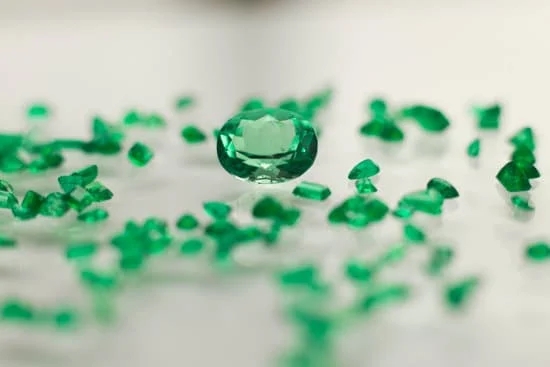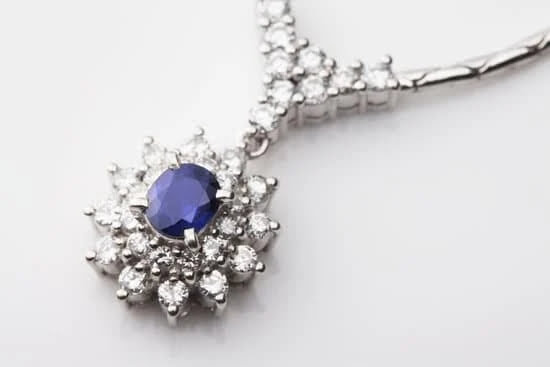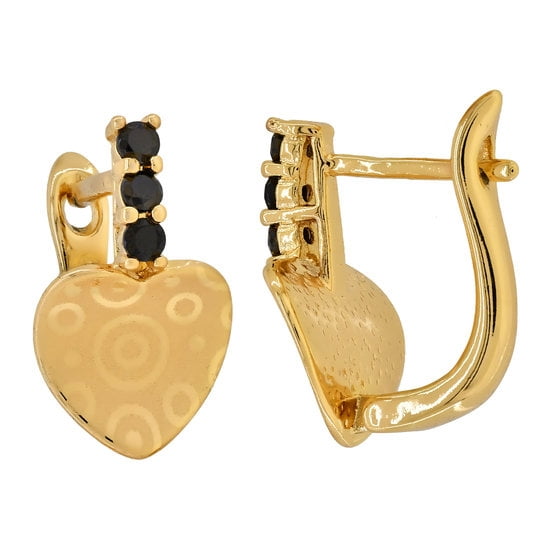Are you wondering how to sell handmade jewelry at flea markets and make a profit? Handmade jewelry has a unique allure, offering shoppers one-of-a-kind pieces that reflect personal style and craftsmanship.
Flea markets provide an excellent opportunity for artisans to showcase their creations and connect with potential customers in a bustling, vibrant environment. In this article, we will explore the essential steps for successfully selling handmade jewelry at flea markets, from finding the right venue to engaging with customers and sustaining your business’s success.
The art of crafting handmade jewelry holds a special appeal for both creators and consumers alike. Each piece is imbued with creativity, skill, and individuality, making it distinct from mass-produced accessories. Flea markets offer artisan jewelers a platform to display their unique creations to an enthusiastic audience seeking distinctive items. With the right approach, flea markets can be an ideal setting for selling handmade jewelry and building a loyal customer base.
Successfully selling handmade jewelry at flea markets requires careful planning and strategic execution. From selecting the most suitable venue to creating an eye-catching display, pricing products effectively, leveraging marketing tactics, interacting with customers, handling transactions seamlessly, and sustaining long-term success – there are various facets to consider on this exciting journey as an artisan jeweler.
This article aims to guide you through each step of this process so that you can establish yourself as a successful vendor at flea markets while showcasing your exquisite handmade jewelry pieces.
Finding the Right Flea Market
When it comes to selling handmade jewelry at flea markets, finding the right flea market is essential to your success. Not all flea markets are created equal, and selecting the best one for your handmade jewelry can make a significant difference in your sales. Here are some tips for researching and choosing the ideal flea market for selling your unique creations:
1. Research Local Flea Markets: Start by researching flea markets in your local area. Look for ones that have a reputation for attracting a diverse crowd, including those interested in handmade goods.
2. Visit Potential Flea Markets: Once you have identified a few potential flea markets, consider visiting them as a shopper before committing to setting up a booth. Take note of the type of vendors present, the demographic of shoppers, and the overall atmosphere of the market.
3. Inquire About Vendor Opportunities: Reach out to the organizers of the flea markets you are interested in and inquire about vendor opportunities for selling handmade jewelry. Ask about their policies, fees, and any specific guidelines they may have for handmade or artisan vendors.
By taking the time to research and select the right flea market for selling your handmade jewelry, you can maximize your sales potential and connect with customers who appreciate unique, handcrafted items.
Remember that identifying the right marketplace is key when thinking about how to sell handmade jewelry at flea markets; location will play an important role in determining whether or not you’ll be able to reach people genuinely interested in what you’re offering.
Crafting an Eye-Catching Display
Crafting an attractive and eye-catching display at flea markets is crucial for drawing in potential customers and making your handmade jewelry stand out among the competition. The first step in creating an appealing booth setup is to invest in quality display materials such as stands, racks, and cases that will showcase your jewelry effectively. Consider using different levels and heights to add visual interest and make it easier for shoppers to see all of your products.
In addition to the physical layout of your booth, the overall aesthetic and theme should reflect the style of your handmade jewelry. For example, if your pieces have a bohemian vibe, consider incorporating natural elements like plants or vintage fabrics into your display. Lighting is also key to making your jewelry shine – literally. Utilize spotlights or string lights to illuminate your products and create an inviting atmosphere within your booth.
Another important aspect of crafting an eye-catching display is ensuring that it is well-organized and clutter-free. Group similar pieces together and use signage or tags to clearly indicate prices and materials used. Keep in mind that less can be more when it comes to showcasing handmade jewelry – overcrowding the display can overwhelm potential customers.
To further enhance your booth setup, consider offering interactive elements such as a DIY jewelry-making demo or personalized styling sessions for customers. These activities not only draw attention but also create memorable experiences for visitors to your booth. This personal touch can set you apart and leave a lasting impression on potential buyers, increasing the likelihood of future sales.
| Display Tip | Description |
|---|---|
| Utilize Different Heights | Incorporate stands, racks, or cases at varying heights to add visual interest to booth setup |
| Reflect Jewelry Style in Aesthetic | Ensure that the overall theme of the booth reflects the style of handmade jewelry being sold |
| Offer Interactive Elements | Create memorable experiences by offering demos or personalized sessions at the booth |
Pricing Your Handmade Jewelry
One of the most crucial aspects of selling handmade jewelry at flea markets is setting the right prices for your products. The right pricing strategy can attract buyers while still ensuring that you make a profit from your sales. Here are some strategies for setting prices that will appeal to potential customers and keep your business sustainable:
- Calculate Costs: Start by determining the costs involved in creating each piece of jewelry, including materials, labor, and any other overhead expenses. This will give you a baseline price for your products.
- Research Market Prices: Look at what similar handmade jewelry items are selling for at other flea markets or craft fairs. This will give you an idea of the competition and help you set competitive prices.
- Consider Perceived Value: Take into account the perceived value of your handmade jewelry when setting prices. Factors such as uniqueness, quality, and craftsmanship can justify higher price points.
By carefully considering these factors, you can set prices that entice buyers while still ensuring that your business remains profitable. Remember to regularly evaluate and adjust your pricing strategy based on customer feedback and market trends to optimize sales.
Overall, pricing your handmade jewelry strategically is essential for success at flea markets. By employing these strategies and staying adaptable to market changes, you can attract buyers while still making a profit from your sales.
Lastly, be sure to engage with customers about their budgetary needs and preferences-this may encourage them to make a purchase if they feel they’re being heard and understood.
Marketing and Promotion
Another powerful marketing tool for selling handmade jewelry at flea markets is word-of-mouth. Encourage satisfied customers to spread the word about your products and share their positive shopping experiences with others. Offering incentives such as discounts or free gifts for referrals can motivate existing customers to refer their friends and family to your booth.
In addition to social media and word-of-mouth, consider other tactics such as distributing flyers in the local community, participating in community events or craft fairs, and collaborating with other vendors to cross-promote each other’s products. These strategies can help increase foot traffic to your booth and create more opportunities for selling your handmade jewelry.
| Marketing Tactics | Effectiveness |
|---|---|
| Social Media Promotion | High |
| Word-of-Mouth Referrals | Medium |
| Flyer Distribution | Low |
| Cross-Promotion with Other Vendors | High |
Interacting With Customers
When selling handmade jewelry at flea markets, the way you interact with potential customers can make a significant impact on your sales. Engaging with customers in a friendly and knowledgeable manner can help build trust and ultimately lead to successful transactions. Here are some techniques for engaging with potential buyers and closing sales at flea markets.
Showcase Your Expertise
One of the most effective ways to engage with potential buyers is to showcase your expertise in jewelry making. When customers see that you are knowledgeable and passionate about your craft, they are more likely to trust the quality and value of your handmade jewelry. Be prepared to answer any questions about your materials, design process, and care instructions for your pieces.
Offer Personalized Recommendations
Engage with customers by offering personalized recommendations based on their preferences and style. Ask them about their favorite colors, metal preferences, or specific types of jewelry they are looking for. This personalized approach can make customers feel valued and increase the likelihood of making a sale.
Provide Excellent Customer Service
Creating a positive shopping experience for potential buyers is crucial for closing sales. Greet visitors to your booth with a friendly smile, offer assistance without being pushy, and be attentive to their needs. Additionally, be prepared to handle any objections or concerns they may have about purchasing handmade jewelry.
By implementing these techniques for engaging with potential buyers, you can increase the chances of closing sales and building a loyal customer base for your handmade jewelry business at flea markets. Remember that creating a positive and enjoyable shopping experience is key to sustaining success in this competitive space.
Handling Transactions
Accepting Payment Methods
When selling handmade jewelry at flea markets, it’s important to consider the various payment methods that potential customers may want to use. While cash is still a popular form of payment at flea markets, offering the option to accept credit and debit cards can significantly increase sales.
One way to do this is by using a mobile payment processing system or a card reader that attaches to a smartphone or tablet. This allows you to securely accept card payments on the spot, providing convenience for your customers and increasing your sales opportunities.
Organizing Your Cash Flow
Managing cash transactions at flea markets requires careful organization to ensure that you can provide change for customers while keeping your earnings secure. Consider using a cash box with compartments for different denominations of bills and coins, as well as a calculator to quickly total purchases and give accurate change.
It’s also important to keep track of your sales throughout the day and reconcile your earnings at the end of each market day. This not only helps you maintain control over your finances but also provides valuable insight into popular items and pricing strategies.
Stay Secure
Whether you’re accepting cash or card payments, security should be a top priority when handling transactions at flea markets. Keep an eye on your cash box and any electronic payment equipment at all times, and consider using a money belt or apron with secure pockets to keep your earnings close to you.
When processing card payments, make sure that your mobile device is secured against theft or tampering. Additionally, be cautious of counterfeit money and always have a counterfeit detection pen on hand to verify bills before accepting them as payment.
By effectively managing cash, credit card payments, and other forms of transactions at flea markets, you can provide seamless experiences for your customers while protecting your business interests. This can lead to satisfied customers who are more likely to return in the future and contribute to the growth of your handmade jewelry business.
Sustaining Success
As you continue to sell your handmade jewelry at flea markets, it’s important to focus on sustaining success and building a repeat customer base. One of the best ways to do this is by providing excellent customer service and creating a positive shopping experience for your customers. Engaging with potential buyers in a friendly and approachable manner can leave a lasting impression and encourage them to return in the future.
In addition to providing top-notch customer service, consider offering loyalty programs or discounts for repeat customers. This can incentivize shoppers to keep coming back to your booth at the flea market. Another effective strategy for sustaining success is to continually refresh and update your inventory. By introducing new designs and styles, you can keep your offerings fresh and attract both new and repeat customers.
As your handmade jewelry business grows at flea markets, consider expanding your presence beyond the physical marketplace. Utilizing social media platforms and other online channels can help you stay connected with customers between flea market events, as well as reach new potential buyers who may not have had the opportunity to visit your booth in person.
By maintaining an active online presence, you can continue to promote your products and engage with customers even when you’re not at the flea market.
In conclusion, selling handmade jewelry at flea markets can be a rewarding endeavor that offers ample opportunities for growth and success. By focusing on providing exceptional customer service, implementing loyalty programs, refreshing your inventory, and utilizing online marketing strategies, you can build a strong repeat customer base while expanding your business. With dedication and perseverance, you can sustain success and continue to grow your handmade jewelry business at flea markets for years to come.
Frequently Asked Questions
Can You Sell Homemade Items at a Flea Market?
Yes, you can sell homemade items at a flea market. Many flea markets welcome handmade crafts, art, and other goods. It’s a great way to showcase your creativity and make some extra money.
Where Is the Best Place to Sell Handmade Jewelry?
The best place to sell handmade jewelry is often at craft fairs, artisan markets, or online platforms such as Etsy. These venues attract customers specifically seeking unique and handcrafted items, which can be beneficial for selling your jewelry.
What Sells the Most at a Flea Market?
The items that tend to sell the most at flea markets are typically vintage items, antiques, collectibles, and unique one-of-a-kind pieces. Other popular items include clothing, accessories, handmade crafts, and artisanal goods. Customers often look for bargains and unique finds at flea markets.

Welcome to my jewelry blog! My name is Sarah and I am the owner of this blog.
I love making jewelry and sharing my creations with others.
So whether you’re someone who loves wearing jewelry yourself or simply enjoys learning about it, be sure to check out my blog for insightful posts on everything related to this exciting topic!





